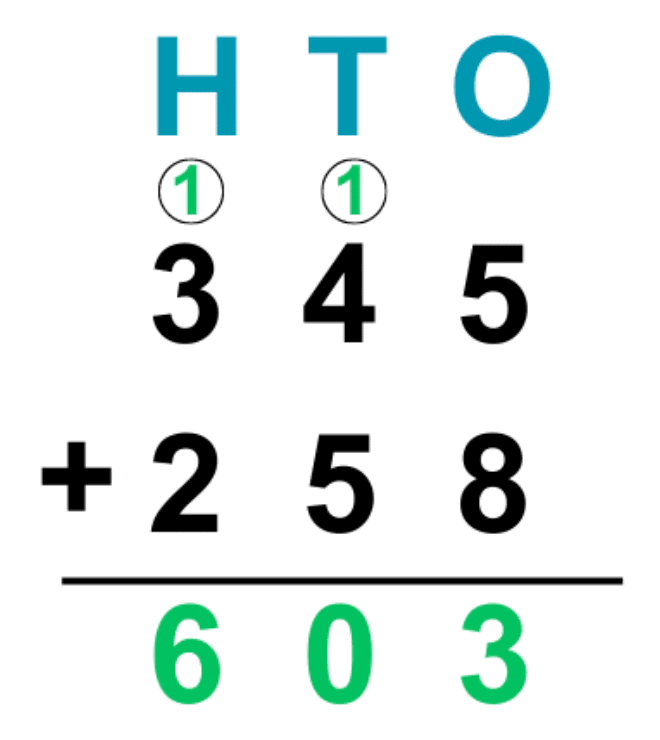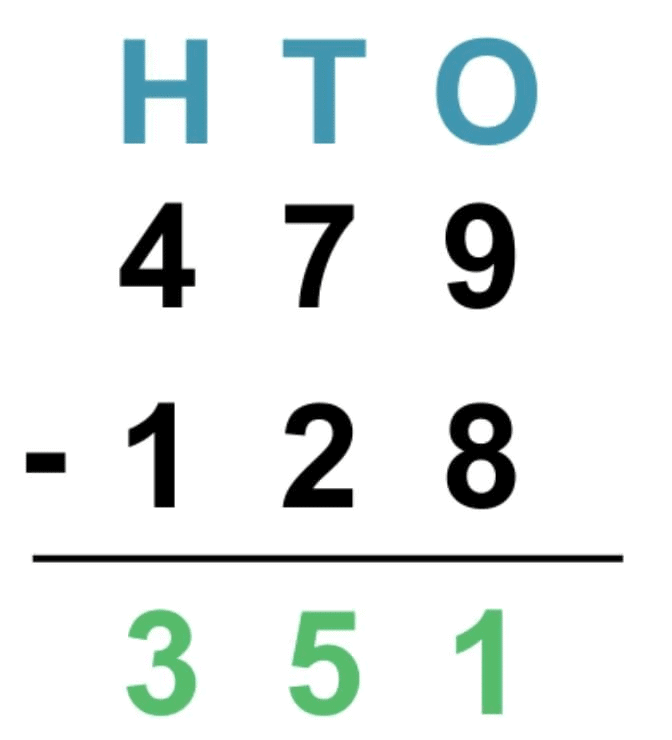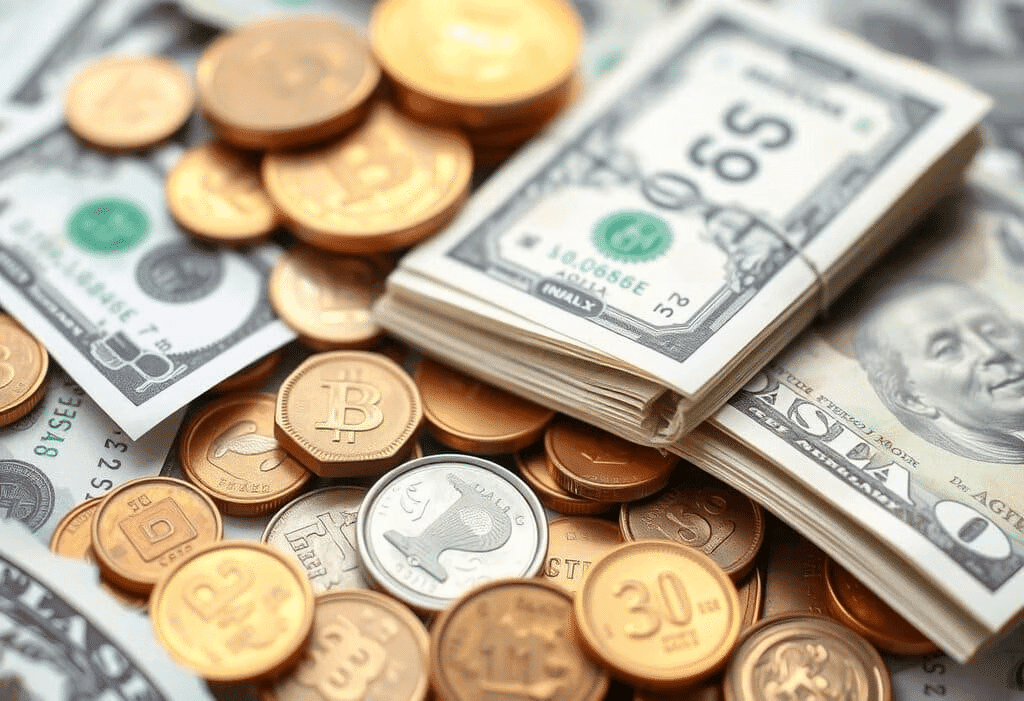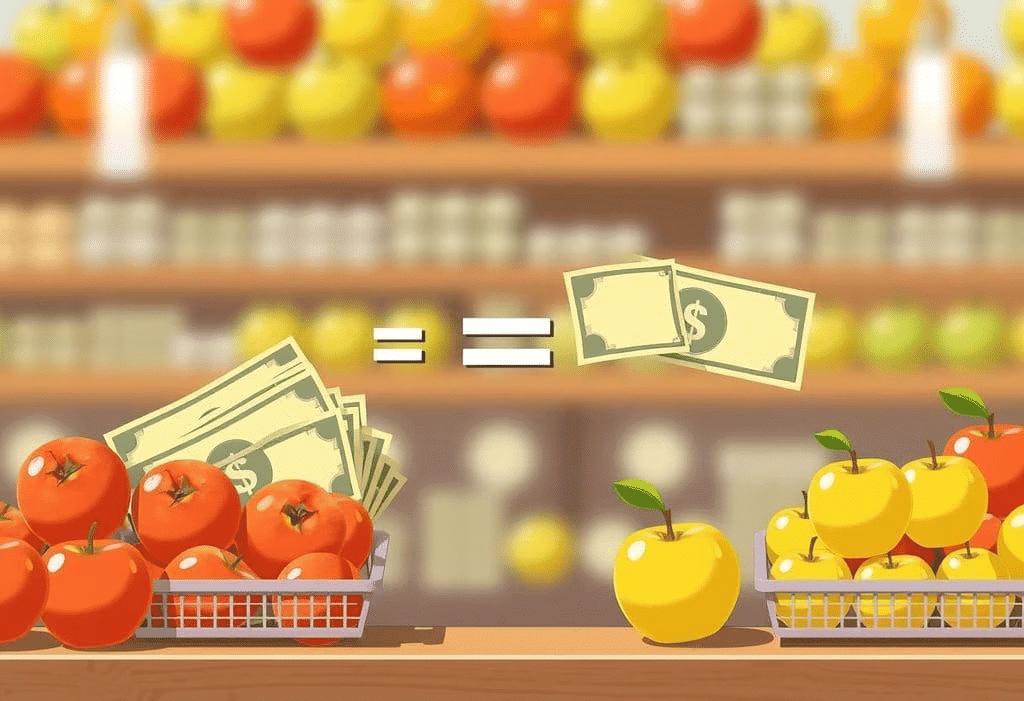More addition and subtraction | Year 3 Mathematics IGCSE (Cambridge) - Class 3 PDF Download
| Table of contents |

|
| Introduction: |

|
| Addition of Numbers |

|
| Subtraction of Numbers |

|
| Understanding Money |

|
| Word Problems Involving Money |

|
| Real-Life Situations and Money |

|
| Practice Questions: |

|
Introduction:
In this chapter, we will learn how to add and subtract numbers, and understand how money is used in real-life situations. We will explore how to handle money, make transactions, and solve problems involving money. By the end, you will be confident in doing addition and subtraction with money and applying these skills to everyday situations!
Addition of Numbers
- Adding Two Numbers:
When we add two numbers, we put the digits in columns, making sure to align them correctly by their place values (ones, tens, hundreds).
Example: 234 + 345:234
Start by adding the ones place (4 + 5 = 9), then the tens place (3 + 4 = 7), and finally the hundreds place (2 + 3 = 5). The total is 579.
+ 345
-------
579 - Carrying Over (Regrouping):
If the sum of a column is 10 or more, we carry over to the next column.
Example: 567 + 478:567
In this case, 7 + 8 = 15, so we write 5 and carry over 1 to the next column.
+ 478
-------
1045
Subtraction of Numbers
- Subtracting Two Numbers:
Subtraction is the opposite of addition. We subtract the digits column by column.
Example: 745 - 367:745
Start by subtracting the ones place (5 - 7). Since 5 is smaller than 7, we borrow from the tens place, making the 5 into 15 and the tens place into 3. Now, we have 15 - 7 = 8.
- 367
-------
378
Subtract the tens place (3 - 6) after borrowing, and finally subtract the hundreds place (6 - 3 = 3). The result is 378.
- Regrouping in Subtraction:
If the digit we are subtracting is larger than the one above it, we need to borrow from the next place value (just like in addition). This concept is useful when subtracting numbers that involve more than one digit.
Understanding Money
- Coins and Notes:
In everyday life, we use coins and notes to make payments. Coins come in different denominations (like 1p, 5p, 10p, 20p, 50p), and notes come in denominations like £5, £10, £20, £50.
Example: You can pay £2.50 using two £1 coins, one 50p coin, and one 10p coin.
- Adding Money:
To add money, we treat it like addition of numbers. We can add the pounds and pence separately and then combine them.
Example: £2.30 + £3.70:£2.30
First, add the pence (30p + 70p = 100p). Since 100p equals £1, we carry over £1 and add it to the pounds, giving us £6.00.
+ £3.70
----------
£6.00 - Subtraction with Money:
When subtracting money, follow the same method as subtraction of numbers.
Example: £5.50 - £2.30:£5.50
Start by subtracting the pence (50p - 30p = 20p), then subtract the pounds (5 - 2 = 3), so the result is £3.20.
- £2.30
----------
£3.20
Word Problems Involving Money

1. Applying Addition and Subtraction to Money:
Money word problems often require us to use addition and subtraction to solve real-life situations, such as making purchases or giving change.
Example: Sarah buys a toy for £4.25 and pays with a £10 note. How much change does she get?
We subtract the cost of the toy from the amount she paid: £10.00 - £4.25 = £5.75. Sarah gets £5.75 as change.
2. Making Transactions:
When you buy something, you often need to add up the total cost and subtract from the money you have.
Example: If you have £2.50 and you buy a pencil for £1.75, how much money will you have left?
£2.50 - £1.75 = £0.75. You will have 75p left.
Real-Life Situations and Money
1. Paying for Items:
When buying things, you need to add up the total cost of the items and figure out how much change to expect or how much more you need.
Example: If you buy 3 apples costing 50p each, how much will it cost in total?
50p + 50p + 50p = £1.50.
2. Making Change:
If you give more money than the cost of the item, you will receive change.
Example: If you give £5 for an item costing £3.60, the change you will get is:
£5.00 - £3.60 = £1.40. You will receive £1.40 as change.
Practice Questions:
- Add £2.25 and £3.50.
- Subtract £4.75 from £10.00.
- Sarah buys a book for £7.30 and pays with a £10 note. How much change does she get?
- You have £5.00 and buy a toy for £3.40. How much do you have left?
- If 3 apples cost 60p each, what is the total cost?
- You pay £8.00 for an item costing £5.60. How much change do you get?
|
65 docs|19 tests
|
FAQs on More addition and subtraction - Year 3 Mathematics IGCSE (Cambridge) - Class 3
| 1. What are the basic principles of addition and subtraction that Year 9 students should know? |  |
| 2. How can understanding money help in real-life situations for Year 9 students? |  |
| 3. What types of word problems involving money should Year 9 students practice? |  |
| 4. How can real-life situations be used to teach addition and subtraction effectively? |  |
| 5. What are some effective strategies for solving practice questions on addition and subtraction? |  |














